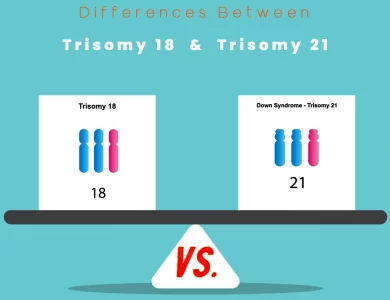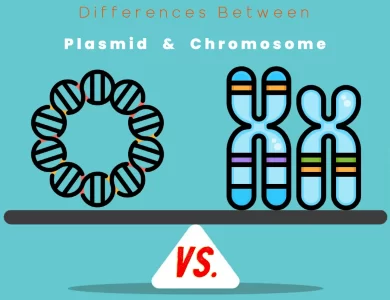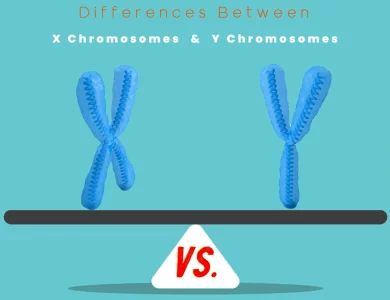Biology Science Nature
Welcome to our comprehensive category page dedicated to the intriguing subject of differences in biology, science, and nature! Here, we delve into the captivating realm of variations and distinctions that exist within these fields, shedding light on diverse terms, concepts, and other fascinating elements. Whether you’re a biology enthusiast, a science lover, or simply curious about the wonders of nature, this collection of content will leave you amazed and enlightened.
-

Antibody vs Antiserum
In the realm of immunology, the distinctions between antiserum and antibodies are pivotal. Antiserum, a lesser-known hero, derives from the blood of individuals exposed to specific antigens or toxins, offering a versatile response against various invaders. Its broad-spectrum nature makes it a valuable tool in emergency treatments, particularly when the exact cause of infection is uncertain. In contrast, antibodies, those precision-guided proteins, are the products of our immune system. They're highly specific, designed to recognize and neutralize particular antigens with remarkable accuracy. The specificity of antibodies is akin to a lock-and-key mechanism, where each antibody is tailored to fit a specific antigen, providing potent, targeted protection. These differences extend beyond specificity. Antiserum is quick to deploy but provides only temporary immunity. In contrast, antibodies offer long-term protection. They're at the core of both natural immunity, as our immune system produces them in response to pathogens, and vaccine-induced immunity, where they're stimulated by vaccines. Antibodies also find extensive applications in diagnostics and have ushered in groundbreaking therapies. Their versatile and cost-effective production, driven by advanced biotechnology, marks a promising future for the field of medicine. In this comprehensive exploration, we delve into the intricate world of antiserum and antibodies, unraveling their distinctions and the pivotal roles they play in our immune defenses.
-

Antiserum vs Serum
In the world of medical science and immunology, Serum and Antiserum are two remarkable entities with unique roles and characteristics. Serum, often regarded as the elixir of life, is the clear, cell-free fluid portion of blood, teeming with water, electrolytes, proteins, hormones, and metabolic waste products. It plays a multifaceted role in the field of healthcare, serving as a diagnostic tool, therapeutic agent, and a cornerstone in scientific research. Conversely, Antiserum emerges as the immunological warrior, equipped with highly specific antibodies tailored to combat particular antigens. These antibodies are forged through a deliberate process involving antigen introduction to stimulate the immune system, making Antiserum a potent weapon against venomous bites, infectious diseases, and autoimmune disorders. The differences between Serum and Antiserum span various aspects, including their composition, production methods, specificity, applications, shelf life, clinical uses, and even cost considerations. In this comprehensive guide, we navigate through these differences, shedding light on their therapeutic uses, roles in research and development, safety considerations, regulatory oversight, and emerging trends in the dynamic fields of Serum and Antiserum. Join us on this illuminating journey to become well-versed in the intriguing world of immunology.
-

Trisomy vs Monosomy
In the intricate realm of genetics, Monosomy and Trisomy stand as two intriguing anomalies, each characterized by a distinctive chromosomal imbalance. Monosomy, represented by conditions like Turner syndrome, results from the absence of one chromosome from a pair, culminating in a total of 45 chromosomes. On the contrary, Trisomy, exemplified by Down syndrome, manifests when an extra chromosome joins the genetic ensemble, elevating the chromosome count to 47. These genetic distinctions serve as the foundation of their dissimilarity. Monosomy and Trisomy extend their influence to both genders, impacting individuals regardless of their sex. While Monosomy conditions like Turner syndrome can vary in severity, Trisomy conditions, including the well-known Down syndrome, come with their set of health implications. The differences in health effects are discernible among various genetic conditions and underscore the need for specialized care and support. Diagnosis plays a pivotal role in understanding and managing these conditions, often involving genetic testing methods like karyotyping and fluorescence in situ hybridization (FISH). The journey of individuals affected by Monosomy and Trisomy encompasses various aspects, from healthcare needs and educational support to the emotional and social impact on their lives. Furthermore, ongoing research offers hope for improved diagnosis, treatment, and a more inclusive future for those affected by these genetic differences. Delve into the comprehensive guide to unveil the intricate "Differences Between Monosomy vs Trisomy."
-

21 vs Trisomy 18
Trisomy 18 vs. Trisomy 21 - it's not just about extra chromosomes; it's about unique lives, challenges, and the beauty of diversity. Trisomy 18, also known as Edwards syndrome, and Trisomy 21, commonly referred to as Down syndrome, are both genetic conditions that involve an additional chromosome, but they differ significantly in several critical aspects. Trisomy 18 is a rare condition, occurring in about 1 in 5,000 live births. It's characterized by a distinct set of physical features, including a small head and clenched fists. Individuals with Trisomy 18 often experience severe developmental delays, cognitive impairment, and a significantly reduced life expectancy. Caregivers play a crucial role in enhancing their quality of life. In contrast, Trisomy 21 is more common, affecting approximately 1 in 700 live births. Those with Down syndrome have a unique set of physical characteristics, such as almond-shaped eyes and a flat facial profile. They experience milder cognitive impairments and typically have an extended life expectancy, often living into their 60s and beyond with proper care and support. Understanding these differences is essential for providing the right care and support to individuals with these conditions and their families. It's a journey of empathy, awareness, and appreciation for the richness of human diversity.
-

Chromosome vs Plasmid
In the intricate realm of genetics, plasmids and chromosomes stand as two fundamental players, each with its unique characteristics and roles. Plasmids, those small, circular DNA molecules, often found in bacteria and other cells, are like genetic accessories, carrying non-essential genes that provide specific advantages. In contrast, chromosomes, the larger, linear structures residing in the nucleus of eukaryotic cells, serve as the genetic architects of life, housing core information vital for an organism's survival, development, and functioning. Plasmids are nimble, replicating independently, and are associated with short-term adaptation and the rapid spread of traits, notably antibiotic resistance in bacteria. On the other hand, chromosomes have a fixed number per species, follow a highly controlled replication process, and play an integral role in long-term evolution, leading to the diversification of species over extended periods. Understanding the differences between these genetic elements is not only fascinating but also vital in comprehending the complexity of genetics and molecular biology. Plasmids and chromosomes are like characters in a grand genetic narrative, each with its distinct role and contribution to the intricacies of life's genetic code.
-

Allele vs Gene
In the mesmerizing world of genetics, two essential components often take center stage: genes and alleles. Understanding the distinctions between these genetic elements is pivotal in unraveling the intricate tapestry of life's diversity. Genes, in essence, are the architects of life. They serve as the master plans, the ultimate instruction manuals encoded within segments of DNA. These molecular architects contain the blueprints for synthesizing specific proteins, the workhorses of an organism's cells. Genes are the primary units of heredity, passing on traits from one generation to the next. Whether it's the color of your eyes, the texture of your hair, or your susceptibility to certain diseases, genes hold the key to the unique features that define you. On the other hand, alleles bring a twist to this genetic narrative. They are like the alternative versions or flavors of genes. Alleles are different forms of the same gene and are situated at the same position (locus) on homologous chromosomes. While genes provide the primary instructions, alleles introduce diversity within a population. Think of alleles as the reason why you might have blue eyes, brown hair, or any of the myriad variations in traits that make each person unique. Together, genes and alleles form the foundation of genetics, shaping the blueprint of life and adding the hues and shades to the canvas of genetic diversity. Join us on a journey to explore the key differences between these genetic actors and discover how they are intricately woven into the fabric of life itself.
-

Chromosomes vs Autosomes
Genetics is a captivating realm where the fundamental building blocks of life are scripted. Within this world, two essential players take center stage: autosomes and chromosomes. These genetic entities, though related, harbor distinct roles and characteristics that shape our genetic identities. Let's embark on a journey to understand the intriguing disparities between autosomes and chromosomes. Autosomes, often referred to as the 'guardians of the ordinary,' are the non-sex chromosomes in the human genome. Humans typically possess 22 pairs of autosomes, making a total of 44. They are the versatile carriers of genetic information responsible for a vast array of traits, from the color of our eyes to our susceptibility to certain diseases. When pondering your unique genetic makeup, autosomes are the go-to culprits behind the scenes. On the other hand, chromosomes, the 'blueprints of life,' encompass all 46 structures in the human genome, including those 22 pairs of autosomes and one pair of sex chromosomes, usually denoted as X and Y. They hold the keys to our entire genetic identity, dictating not just our physical traits but also our biological processes, health, and even our sex. In essence, chromosomes are the comprehensive instruction manuals for the intricate machinery of our bodies. As we delve deeper into the differences between these genetic protagonists, we uncover unique insights into inheritance patterns, genetic disorders, and their roles in shaping the vast tapestry of genetic diversity.
-

Difference Between Y Chromosomes and X
The world of genetics holds many secrets, and some of the most fascinating lie within the X and Y chromosomes. These tiny but mighty genetic structures are responsible for shaping our biological identity and impacting various aspects of our lives. The differences between X and Y chromosomes are not just about determining gender; they encompass the very essence of our genetic makeup. First and foremost, the structural distinctions are striking. The X chromosome, often termed the "female" chromosome, is sizeable, carrying a multitude of genes responsible for a wide range of traits. In contrast, the Y chromosome, known as the "male" chromosome, is smaller and carries fewer genes, primarily related to male development. Beyond their physical differences, these chromosomes play unique roles in determining sex. While the X chromosome influences various traits in both males and females, the Y chromosome acts as the master switch for male development, initiating the cascade of events that lead to the formation of male sex characteristics. But the story doesn't end there. X and Y chromosomes also have profound implications for our health, with X-linked genetic disorders like hemophilia and Duchenne muscular dystrophy linked to mutations on the X chromosome. The Y chromosome, on the other hand, has recently sparked debates about its future viability and its potential involvement in male-specific health conditions. Understanding the distinctions between X and Y chromosomes is like unlocking a genetic treasure chest, revealing insights into human biology, health, and evolution. Join us on this exploration as we dive deep into the captivating world of X vs Y chromosomes.
-

Virion vs Virus
In the captivating world of microbiology, two terms often intertwined yet distinctly different are 'virus' and 'virion.' While both are integral to the complex world of infectious agents, understanding their unique characteristics is pivotal in unraveling the mechanisms behind infectious diseases and advancing the field of medicine. Viruses, those enigmatic genetic parasites, are the culprits behind a wide spectrum of illnesses, from the common cold to severe conditions like HIV and COVID-19. These tiny entities consist of genetic material encapsulated within a protein coat, often with an outer lipid envelope. Yet, they lack the ability to replicate independently, relying on host cells to perpetuate their existence. On the other hand, virions, often unsung heroes in the viral saga, are the active infectious forms of viruses. These virions serve as the vehicles for transmission and infection, attaching to host cells and delivering the viral genetic material. In essence, virions act as the couriers initiating the process of infection, while viruses provide the genetic instructions for replication. As we delve into this exploration, we'll decipher the differences in structure, size, functions, and the pivotal roles that viruses and virions play in the landscape of infectious diseases. Whether you're a science enthusiast or simply curious about the microscopic world, understanding these disparities sheds light on the ongoing battle between humanity and the world of pathogens. So, let's journey through the intriguing contrasts that set viruses and virions apart.
-

Protozoa vs Fungi
In the intricate tapestry of life, the microbial world is a realm of remarkable diversity, with fungi and protozoa standing as two distinct, albeit tiny, threads. As we embark on this exploration, it's essential to understand the fundamental differences that set these microorganisms apart. Fungi, representing the kingdom Fungi, are typically multicellular organisms characterized by their chitinous cell walls. They are non-photosynthetic, relying on absorption for their nutrition. Fungi play a crucial role in ecosystems as decomposers, breaking down organic matter and recycling nutrients. They are known for their mutualistic associations with plants, aiding in nutrient absorption, as well as for their applications in biotechnology, pharmaceuticals, and food production. On the other side of the microbial spectrum, we have protozoa, members of the kingdom Protista. These unicellular organisms are defined by their flexible cell membranes and can exhibit diverse modes of locomotion, including cilia, flagella, pseudopodia, and gliding. Protozoa are primarily aquatic, residing in freshwater and marine environments. They are pivotal in regulating microbial populations, serving as predators of microorganisms, engaging in symbiotic relationships, and, in some cases, causing diseases in animals and humans. As we delve deeper into the captivating world of fungi and protozoa, we'll uncover their unique genetic diversity, reproductive strategies, sensory mechanisms, and their intriguing evolutionary past. Join us on this journey to appreciate the intricate roles these microorganisms play in shaping our ecosystems and understanding their impact on human health and industry.









